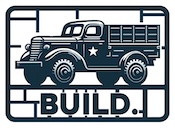I’ve had the luck (and the pleasure) of having met Bob Bethea, a local and amazing figure painter, at my local club meeting. Bob has been incredibly kind and generous with his time as he teaches me the fine art of figuring painting. I recently republished an article Bob had written for our local club newsletter sharing some of his tips on getting start with figuring painting, and if you haven’t read it, it’s well worth the time.
I thought I’d also share the newbie viewpoint on what I’ve learned. Often, the things that screw up the newbies don’t even registered on the minds of the experienced folks. So in no particular order, here’s a few of my tips. And remember, this only applies to acrylic paints!
Wet palette
Don’t use the paint trays with small recesses, buy or make a wet palette. Google it for more info, but basically, a wet palette creates a wet surface to put your acrylics on top of. This means that you don’t have to worry about constantly putting water into your paint before it dries out, and you can store the paints overnight. Here’s what you need:
- The palette/container. I bought a fancy wet palette from an art supply house, thinking it would be a great tool. Turns out, Bob’s solution is vastly better: an airtight sandwich sized tupperware-style container. This kind. These are small enough to manage, seal airtight and without leaks, and are super cheap. (The fancy version wasn’t actually air tight, which largely defeats the purpose!)
- A sponge. You can use any kind, I suppose, but I strongly suggest the wet palette sponge that you can find at an art supply store. Buy a big sheet and cut it into a small enough piece to fit your container. This sponge is super thin, but holds water nicely. That means you don’t have a ton of water sloshing around. Plus, if you take it out, wring it dry, in a few hours, the sponge is dry as a Saharan desert.
- Paper. Again, use the official wet palette paper from an art supply store. This paper is very thick, washable, and reusable. Bob uses the unwaxed parchment paper, but personally I like the real stuff. It’s more expensive, but worth it. Whatever you use, make sure it’s not going to leave paper fuzz. Also make sure that it’s permeable… if water can’t get through from the sponge to your paints, the wet palette is worthless.
- Distilled water. Don’t use the tap water. Too much gunk in it that can leave residue on your figure.
Use this. You’ll love it.
Choosing figures
Like most other activities in modeling, when I started the learning process, I got out the junk to test on. I found a few old Tamiya figures and started trying to apply the lessons I’d be reading about. Before our first lesson, Bob told me to bring over a good figure. A good figure?? But they’re more expensive than the free junk from the spares box!
Turns out, it’s a lot easier to paint a good figure with nicely molded details than a bad one with little detail at all. Go ahead. Invest the money in the good stuff.
Research and dramatization
- One thing that I’m still trying to get used to: the dramatic whites and blacks that are actually present in clothing. As I’ve been learning, it’s surprising to me how dark the shadows of clothing are, and how near-white the tops of folds are. For scale effect, it’s really important to go vastly stronger on both shadows and highlights than you would think is “right”.
- Which brings me to viewing distance. Don’t consider the paint job you’re doing right up close. Arm’s length is about the right distance to be considering how things look.
- Take pictures of real people wearing real garments. Start a collection of various types of fabrics and materials and lighting conditions. You’ll be surprised how handy they can come in as you paint. And you’ll start to see how, yes, real life has really dark shadows and really bright highlights!
Brushes
- The good brushes are pricey, but the difference is obviously. Buy the good ones and take care of them.
- Don’t go to small. It seems strange when you’re painting a tiny, tiny eyeball, but you want a decent sized brush that can actually *hold* paint. The super tiny 0000 brushes don’t do that, so they are hard to work with.






Leave A Comment